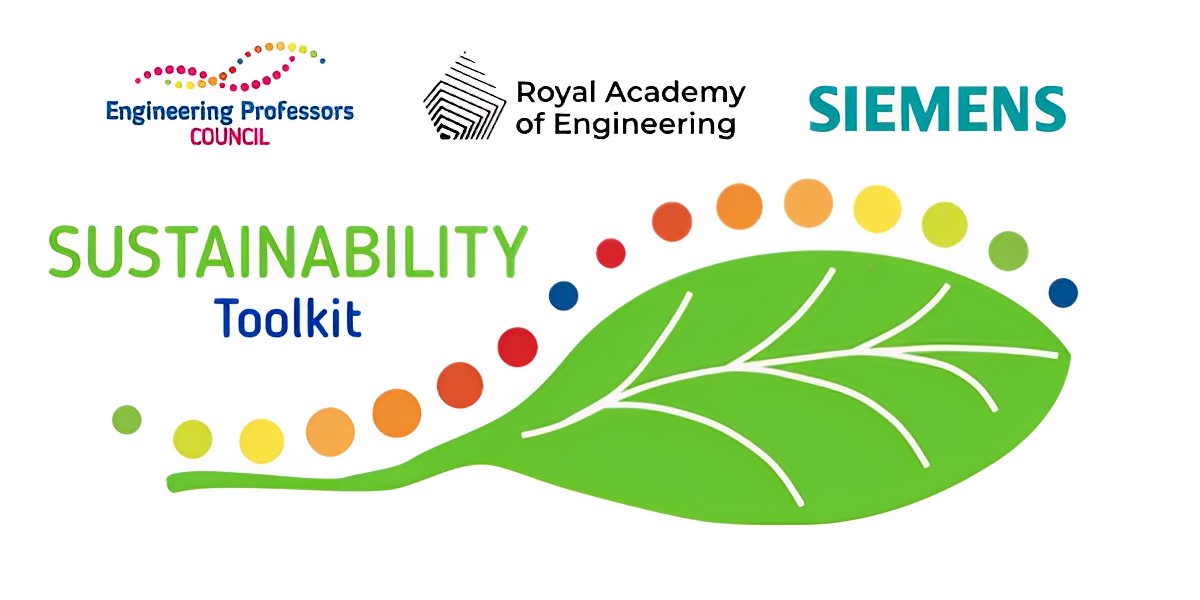Author: Dr Irene Josa (UCL)
Topic: Embodied carbon in the built environment.
Type: Teaching.
Relevant disciplines: Civil engineering; Environmental engineering; Construction management.
Keywords: Embodied carbon; Resilient construction practices; Climate change adaptation; Ethics; Teaching or embedding sustainability; AHEP; Higher education; Pedagogy; Environmental impact assessment; Environmental risk; Assessment.
AHEP mapping: This resource addresses two of the themes from the UK’s Accreditation of Higher Education Programmes fourth edition (AHEP4): The Engineer and Society (acknowledging that engineering activity can have a significant societal impact) and Engineering Practice (the practical application of engineering concepts, tools and professional skills). To map this resource to AHEP outcomes specific to a programme under these themes, access AHEP 4 here and navigate to pages 30-31 and 35-37.
Related SDGs: SDG 4 (Quality education); SDG 9 (Industry, innovation and infrastructure); SDG 11 (Sustainable cities and communities); SDG 13 (Climate action).
Educational aim: To foster a deep understanding of the challenges and opportunities in balancing environmental sustainability and profitability/safety in construction projects. To develop critical thinking and decision-making skills in addressing social, economic, and environmental considerations. To encourage students to propose innovative and comprehensive solutions for sustainable urban development.
Educational level: Intermediate.
Learning and teaching notes:
Before engaging with the case study, learners should be familiar with the process of calculating embodied carbon and conducting a cost-benefit analysis. The case study is presented in three parts. In Part one, an ambitious urban revitalisation project is under development, and a project manager needs to find a balance between financial considerations and the urgent need for sustainable, low-embodied carbon construction. In Part two, the project being developed is located in a coastal area prone to climate change-related disasters. The team needs to ensure that the project is durable in the face of disasters and, at the same time, upholds sustainability principles. Lastly, in Part three, stakeholders involved in the two previous projects come together to identify potential synergies.
Learners have the opportunity to:
- Assess the ethical dimensions of construction scenarios, particularly the trade-offs between socio-economic constraints and environmentally-friendly practices.
- Identify potential conflicts between environmental advocacy and financial considerations, fostering critical thinking in real-world construction project dilemmas.
- Gain hands-on experience in researching and calculating the embodied carbon of different construction options, enhancing their understanding of sustainability metrics.
- Conduct cost-benefit analyses for various construction methods, providing insights into the financial implications of sustainable practices.
- Engage in discussions and debates on challenges in reducing embodied carbon, balancing sustainability with profitability, and convincing stakeholders of long-term benefits.
Teachers have the opportunity to:
- Equip students with strategies to navigate tensions between sustainability goals and socio-economic constraints.
- Integrate technical content on sustainable construction methods.
- Integrate engineering content with business and entrepreneurial leadership, fostering interdisciplinary learning and preparing students for real-world challenges.
- Informally evaluate students’ critical thinking and communication skills through discussions, activities, and presentations related to sustainable construction practices.
Supporting resources:
Learning and teaching resources:
Environmental impact assessment:
- Hammond, G., et al. (2011). Embodied carbon: the inventory of carbon and energy.
- Hauschild, M. Z., et al. (2018). Life cycle assessment.
- IStructE (2022). How to calculate embodied carbon (Second edition).
Social impact assessment:
- Alomoto, W. et al. (2021). Social impact assessment: a systematic review of literature.
- Benoît Norris, C., et al. (2020). Guidelines for social life cycle assessment of products and organizations.
- Chevrier, B., et al.(2010). The guidelines for social life cycle assessment of products: just in time!’
Economic impact assessment:
- Korpi, E., & Ala‐Risku, T. (2008). Life cycle costing: a review of published case studies.
- Mishan, E. J., & Quah, E. (2020). Cost-benefit analysis.
- Woodward, D. G. (1997). Life cycle costing—Theory, information acquisition and application.
Systems thinking and holistic analysis approaches (PESTLE, SWOT):
- Anderson, V., & Johnson, L. (1997). Systems thinking basics .
- Checkland, P. (1999). Systems thinking.
- Coman, A., & Ronen, B. (2009). Focused SWOT: diagnosing critical strengths and weaknesses.
- Christodoulou, A., & Cullinane, K. (2019). Identifying the main opportunities and challenges from the implementation of a port energy management system: A SWOT/PESTLE analysis.
- Helms, M. M., & Nixon, J. (2010). Exploring SWOT analysis–where are we now? A review of academic research from the last decade.
- Perera, R. (2017). The PESTLE analysis.
- Rastogi, N. I. T. A. N. K., & Trivedi, M. K. (2016). PESTLE technique–a tool to identify external risks in construction projects.
Real-world cases to explore:
- Related to Part one: Hudson Yards (New York City), King Abdullah Economic City (Saudi Arabia), Masdar City (United Arab Emirates).
- Related to Part two: Bangladesh Delta Resilience Project, Majuro Atoll Relocation Project, New Orleans Post-Katrina Redevelopment, Kivalina Relocation Project, Vietnamese Red River Delta Resilient Cities Project.
- Related to Part three: Amsterdam Circular Centre, Seoul Forest.
Part one:
In the heart of an urban revitalisation project, the company CityScape Builders is embarking on a transformational journey to convert a neglected area into a vibrant urban centre which will be named ReviveRise District. This urban centre will mostly be formed by tall buildings.
Avery, the project manager at CityScape Builders, is under immense pressure to meet tight budget constraints and deadlines. Avery understands the project’s economic implications and the importance of delivering within the stipulated financial limits. However, the conflict arises when Rohan, a renowned environmental advocate and consultant, insists on prioritising sustainable construction practices to reduce the project’s embodied carbon. Rohan envisions a future where construction doesn’t come at the cost of the environment.
On the other side of the situation is Yuki, the CFO of CityScape Builders, who is concerned about the project’s bottom line. Yuki is wary of any actions that could escalate costs and understands that using low-embodied carbon materials often comes with a higher price tag.
In light of this situation, Avery proposes exploring different options of construction methods and materials that could be used in the design of their skyscrapers. Avery needs to do this quickly to avoid any delay, and therefore consider just the most important carbon-emitting aspects of the different options.
Optional STOP for questions and activities
- Activity: research and calculate the embodied carbon of three different options that could be used to build one of the buildings at ReviveRise District. Make sure to consider all key aspects involved (e.g., project’s location, possible materials, etc.). Students can be encouraged to challenge the need to build skyscrapers.
- Activity: conduct a cost-benefit analysis for the different options. What are the potential financial gains and losses? Students may want to consider the gains and losses from the perspectives of different stakeholders, such as engineers (e.g., construction programme savings) or quantity surveyors/cost consultants (e.g., security of supply material, insurance premiums).
- Discussion: what are the key challenges in reducing embodied carbon in a construction project?
- Discussion: how can the construction industry minimise activities that cause conflict between profitability and sustainability, and maximise activities that mutually-benefit sustainability and profitability?
- Discussion: what are some strategies for convincing stakeholders of the long-term benefits of sustainable practices? In class, this can be done in different ways (e.g., class debate, elevator pitches).
Part two:
CityScape Builders is now embarking on a new challenge, ResilientCoast, a construction project located in a coastal area that is susceptible to climate change-related disasters. This region is economically disadvantaged and lacks the financial resources often found in more developed areas.
Micha, the resilience project manager at CityScape Builders, is tasked with ensuring the project’s durability in the face of disasters and the impacts of climate change. Micha’s primary concern is to create a resilient structure that can withstand extreme weather events but is equally dedicated to sustainability goals. To navigate this complex situation, Micha seeks guidance from Dr. Ravi, a climate scientist with expertise in coastal resiliency. Dr. Ravi is committed to finding innovative and sustainable solutions that simultaneously address the climate change impacts and reduce embodied carbon in construction.
In this scenario, Bao, the local community leader, also plays a crucial role. Bao advocates for jobs and economic development in the area, even though Bao is acutely aware of the inherent safety risks. Bao, too, understands that balancing these conflicting interests is a substantial challenge.
In this situation, Micha wonders how to construct safely in a vulnerable location while maintaining sustainability goals.
Optional STOP for questions and activities
- Activity: investigate sustainable construction practices that enhance resilience. Create a list of methods and materials designed to withstand climate challenges,and evaluate their effectiveness to date.
- Discussion: how can the construction industry minimise activities that cause conflict between safety and sustainability, and maximise activities that mutually-benefit sustainability and safety?
- Discussion: what are the ethical considerations when constructing in areas prone to natural disasters and resource scarcity?
- Discussion: what are some innovative solutions to promote safety and sustainability in construction projects in challenging environments, and what is their effectiveness in this situation?
Part three:
Robin and Samir are two independent sustainability consultants that are supporting the projects in ReviveRise District and ResilientCoast respectively. They are concerned that sustainability is just being assessed by embodied carbon and cost sustainability, and they believe that sustainability is a much broader concept than just those two indicators. Robin is the independent environmental consultant working with ReviveRise District officials and is responsible for assessing the broader environmental impacts of the construction project. Robin’s analysis spans beyond embodied carbon, considering local job creation, transportation effects, pollution, biodiversity, and other aspects of the project.
Samir, on the other hand, is a municipal board member of ResilientCoast. Samir’s role involves advocating for the local community while striving to ensure that sustainability efforts do not compromise the safety and resilience of the area. Samir’s responsibilities are more comprehensive than just economic considerations; they encompass the entire well-being of the community in the face of climate change.
Robin and Samir recognise the need for cross-city collaboration and information sharing, and they want to collaborate to ensure that the sustainability efforts of both projects do not create unintended burdens for their communities. They acknowledge that a comprehensive approach is necessary for analysing broader impacts, and to ensure both the success of the construction projects and the greater good of both communities. They believe in working collectively to find solutions that are not only sustainable but also beneficial to all stakeholders involved.
Optional STOP for questions and activities
- Activity: work in pairs or small groups to analyse the holistic impacts of a construction project in their local area. Consider environmental, social, and economic factors and propose potential solutions. This can be supported by PESTLE and SWOT analysis, systems diagrams, or similar techniques.
- Activity: envision a scenario where two cities, like in the case study, collaborate on a large construction project. Outline the key challenges, benefits, and potential strategies for success.
- Discussion: how can different stakeholders work together to mitigate unintended burdens in construction projects?
- Discussion: what are some effective strategies for cross-city collaboration on sustainability initiatives?
- Discussion: how can construction projects contribute positively to their local communities while addressing environmental concerns?
The above questions and activities call for the involvement of cross-disciplinary teams, requiring expertise not only in engineering but also in planning, policy, and related fields. Ideally, in the classroom setting, students with diverse knowledge across these disciplines can be grouped together to enhance collaboration and address the tasks proposed. In cases where forming such groups is not feasible, the educator can assign specific roles such as engineer, planner, policymaker, etc., to individual students, ensuring a balanced representation of skills and perspectives.
This work is licensed under a Creative Commons Attribution-ShareAlike 4.0 International License.
Any views, thoughts, and opinions expressed herein are solely that of the author(s) and do not necessarily reflect the views, opinions, policies, or position of the Engineering Professors’ Council or the Toolkit sponsors and supporters.
To view a plain text version of this resource, click here to download the PDF.





